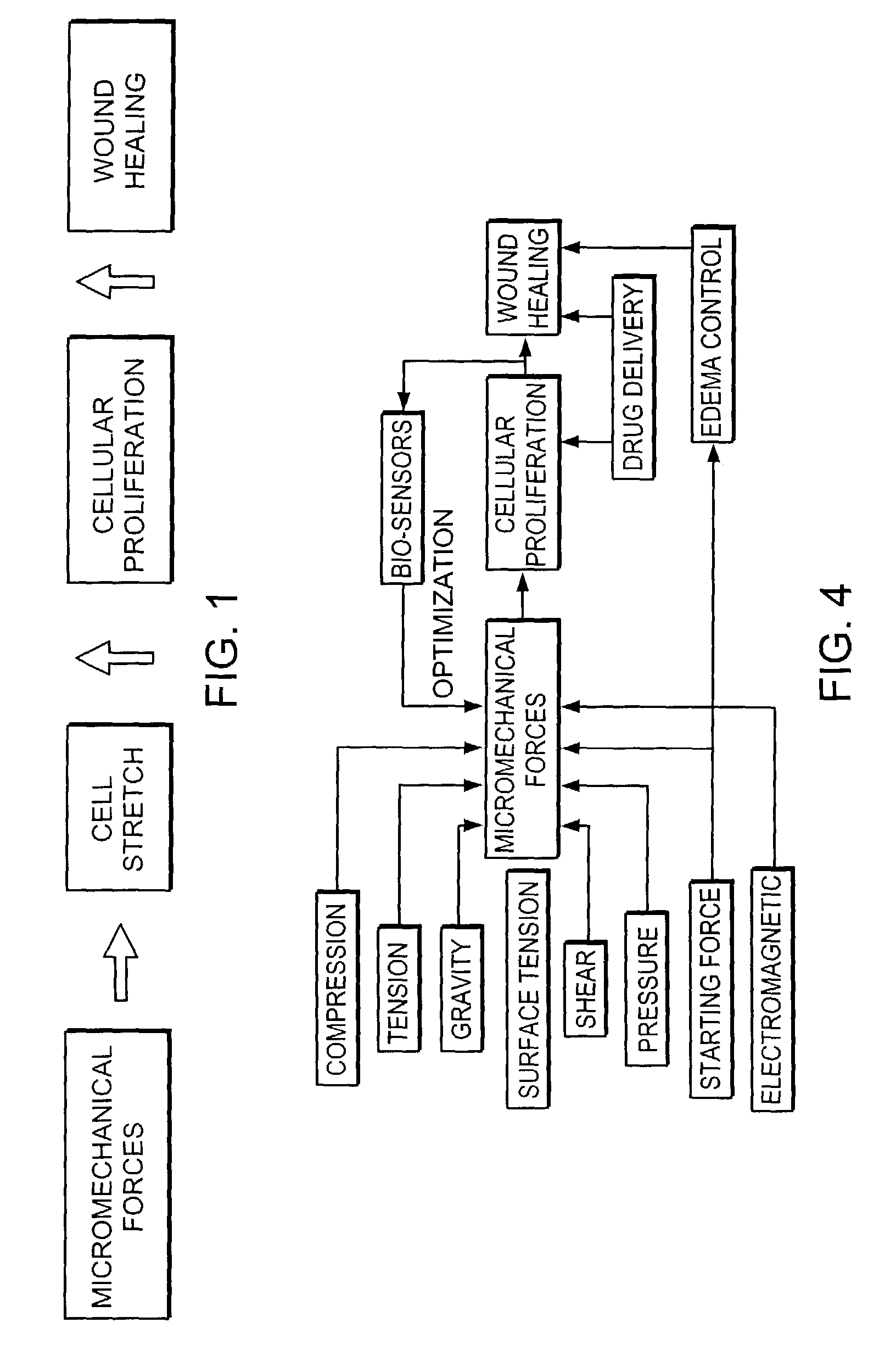Methods and apparatus for application of micro-mechanical forces to tissues
a micro-mechanical force and tissue technology, applied in the field of tissue growth promotion and wound healing, can solve the problems of inability to heal the lower extremity wound, inability to promote the growth of tissue and fluid, and progressive tissue and fluid loss, so as to accelerate tissue ingrowth, enhance tissue repair, and increase the overall size
- Summary
- Abstract
- Description
- Claims
- Application Information
AI Technical Summary
Benefits of technology
Problems solved by technology
Method used
Image
Examples
Embodiment Construction
[0030]Physical forces that are applied to tissues at the macroscale can trickle down to affect cell form and function. However, when these forces are applied homogeneously over large areas, the level of strain or deformation experienced by individual cells can be quite small, thus limiting the cellular response. In addition, global force applications typically result in a wide variety of stresses within a wound. Several devices are currently available that assist in wound healing by applying mechanical forces on the macroscale (evenly over areas greater than 1 cm2) including tension wound closure devices, vacuum assisted closure and devices applied in distraction osteogenesis. This invention focuses on the development of methods and devices to locally concentrate forces applied on the macroscale within multiple smaller regions (less than 1 cm2 and preferably less than 1 mm2), so as to amplify the forces that are experienced by individual cells on the microscale. One advantage of thi...
PUM
| Property | Measurement | Unit |
|---|---|---|
| Temperature | aaaaa | aaaaa |
| Mechanical force | aaaaa | aaaaa |
Abstract
Description
Claims
Application Information
 Login to View More
Login to View More - R&D
- Intellectual Property
- Life Sciences
- Materials
- Tech Scout
- Unparalleled Data Quality
- Higher Quality Content
- 60% Fewer Hallucinations
Browse by: Latest US Patents, China's latest patents, Technical Efficacy Thesaurus, Application Domain, Technology Topic, Popular Technical Reports.
© 2025 PatSnap. All rights reserved.Legal|Privacy policy|Modern Slavery Act Transparency Statement|Sitemap|About US| Contact US: help@patsnap.com



